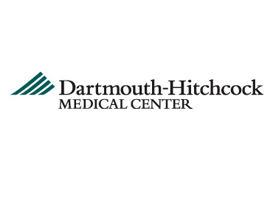A Microdose Evaluation Study of ABY-029 in Primary Sarcoma
| Status: | Recruiting |
|---|---|
| Healthy: | No |
| Age Range: | 18 - Any |
| Updated: | 1/10/2019 |
| Start Date: | August 30, 2017 |
| End Date: | December 31, 2019 |
| Contact: | Keith D Paulsen, PhD |
| Email: | Keith.D.Paulsen@Dartmouth.edu |
| Phone: | 603-646-2695 |
A Phase 0 Open Label, Single-center Clinical Trial of ABY-029, an Anti-EGFR Fluorescence Imaging Agent Via Single Intravenous Injection to Subjects With Primary Sarcoma.
The primary study objective is to determine if microdoses of ABY-029 (up to 6X) lead to
detectable signals (defined as signal-to-noise ratio, SNR ≥10, with the Odyssey NIR scanner
in sampled tissues with an EGFR pathology score ≥ 1 based on histological staining and
compare SNR to tissues with an EGFR pathology score < 1).
The secondary study objective is to assess if the spatial patterns of EGFR expression
correlate with the tumor targeting of ABY-029 detection by NIR scanner relative to
histopathology diagnosis, and other indicators (e.g. proliferation, infiltration, etc.) as
the gold standard, and to measure the molecular uptake and concentration of ABY-029 in
resected specimens.
detectable signals (defined as signal-to-noise ratio, SNR ≥10, with the Odyssey NIR scanner
in sampled tissues with an EGFR pathology score ≥ 1 based on histological staining and
compare SNR to tissues with an EGFR pathology score < 1).
The secondary study objective is to assess if the spatial patterns of EGFR expression
correlate with the tumor targeting of ABY-029 detection by NIR scanner relative to
histopathology diagnosis, and other indicators (e.g. proliferation, infiltration, etc.) as
the gold standard, and to measure the molecular uptake and concentration of ABY-029 in
resected specimens.
The investigators plan to enroll a minimum of 12 and a maximum of 18 adult patients with a
diagnosis of primary soft-tissue sarcoma in this open label, single center, clinical trial of
ABY-029. Two cohorts will be enrolled with a minimum of 6 and a maximum of 12 subjects in
Cohort 1 and 6 patients in Cohort 2. Cohort 1 will include patients with an EGFR pathology
score ≥ 1; Cohort 2 will include patients with an EGFR pathology score of < 1 (control).
Initial diagnostic biopsy specimens will be analyzed for EGFR positivity by
immunohistochemistry following routine diagnostic processing by Pathologist. Patients will be
administered a single intravenous dose of ABY-029 1-3 hours before surgery. Following tumor
excision, the tumor will be transported to the Pathologist and will be inked and sectioned.
Following sectioning the tumor will be imaged using a near-infrared scanner and fiber-probe
based system. Quantitative measurements of fluorophore concentration will be measured for
tumors with EGFR pathology score ≥ 1 and compared to those with EGFR pathology score < 1.
Quantitative mapping of fluorophore concentration will be correlated with local EGFR
concentration and blood vessel density. Upon specimen analysis, fluorophore measurements will
be taken from normal, marginal tissues (e.g. skeletal muscle, adipose) in addition to the
tumor. Average EGFR concentration and blood vessel density will be determined for each tumor
through histological analysis of sections by routine sarcoma protocol and analysis guided by
regional variations in ABY-029 concentration based upon near-infrared scan results.
The protocol is not a safety study since no physiological effects are expected at microdose
levels of ABY-029. No diagnostic or therapeutic intent is proposed, and administration of the
study drug is not intended to alter the extent of planned tumor resection during the surgical
procedure.
diagnosis of primary soft-tissue sarcoma in this open label, single center, clinical trial of
ABY-029. Two cohorts will be enrolled with a minimum of 6 and a maximum of 12 subjects in
Cohort 1 and 6 patients in Cohort 2. Cohort 1 will include patients with an EGFR pathology
score ≥ 1; Cohort 2 will include patients with an EGFR pathology score of < 1 (control).
Initial diagnostic biopsy specimens will be analyzed for EGFR positivity by
immunohistochemistry following routine diagnostic processing by Pathologist. Patients will be
administered a single intravenous dose of ABY-029 1-3 hours before surgery. Following tumor
excision, the tumor will be transported to the Pathologist and will be inked and sectioned.
Following sectioning the tumor will be imaged using a near-infrared scanner and fiber-probe
based system. Quantitative measurements of fluorophore concentration will be measured for
tumors with EGFR pathology score ≥ 1 and compared to those with EGFR pathology score < 1.
Quantitative mapping of fluorophore concentration will be correlated with local EGFR
concentration and blood vessel density. Upon specimen analysis, fluorophore measurements will
be taken from normal, marginal tissues (e.g. skeletal muscle, adipose) in addition to the
tumor. Average EGFR concentration and blood vessel density will be determined for each tumor
through histological analysis of sections by routine sarcoma protocol and analysis guided by
regional variations in ABY-029 concentration based upon near-infrared scan results.
The protocol is not a safety study since no physiological effects are expected at microdose
levels of ABY-029. No diagnostic or therapeutic intent is proposed, and administration of the
study drug is not intended to alter the extent of planned tumor resection during the surgical
procedure.
Inclusion Criteria:
1. Preoperative histological diagnosis of primary sarcoma.
2. Tumor judged to be suitable for open surgical resection based on preoperative imaging
studies.
3. Valid informed consent by subject.
4. Age ≥ 18 years old.
Exclusion Criteria:
1. Pregnant women or women who are breast feeding.
2. Patients on any experimental anti-EGFR targeted therapies, either investigational or
FDA approved.
We found this trial at
1
site
Dartmouth Hitchcock Medical Center Dartmouth-Hitchcock is a national leader in patient-centered health care and building...
Click here to add this to my saved trials
